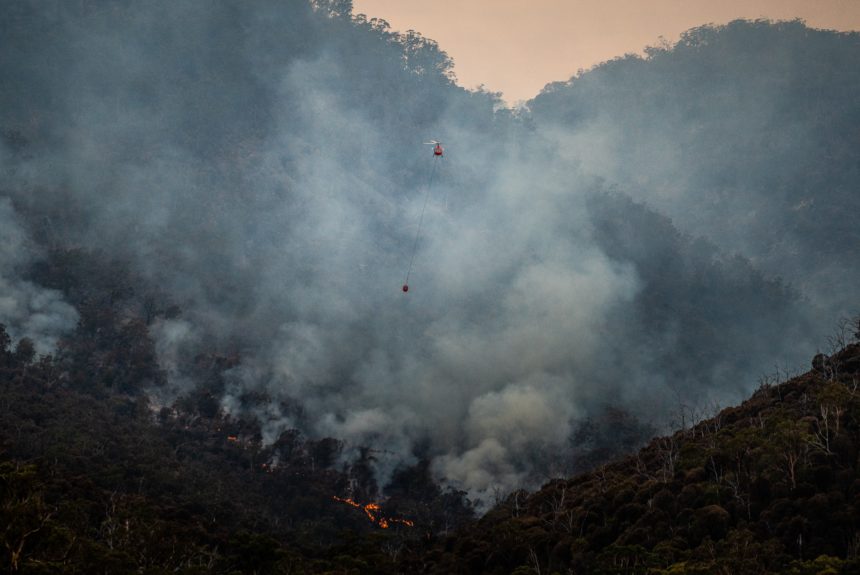Wildfires refer to out-of-control fires that can occur naturally or can be started by humans (purposefully or not). While wildfires are dangerous and destructive, controlled (or prescribed) fires are essential to maintain forest health and reduce the risk of wildfires.
Over the past few years, climate change has extended wildfire seasons and some regions have become hotter and drier. Moreover, failed government policies and bureaucratic obstacles have made the damage from these fires worse. Through more active forest management and policy reforms, we can adapt to a warmer climate and reduce the risk that wildfires present.
Fact v. Myth
- Fact: Wildfires have increased and gotten more costly.
- In terms of acres burned, damage from wildfires is increasing.
- Myth: Climate change is the only thing driving the increase in wildfire damage.
- Climate change influences wildfire seasons, but poor forest management and increased occupancy in high-risk areas also increase wildfire risk and damage.
- Fact: Wildland fires or prescribed burns are ecologically beneficial.
- Wildland fires, which are set off intentionally, improve forest health, decrease invasive species and prevent wildfires from growing in size and severity.
The Dangers of Wildfires
- Wildfires displace people and damage communities
- Wildfires can be environmentally damaging and increase greenhouse gas emissions
- Australia’s bush fires in 2020 released 715 million tonnes of CO2 into the atmosphere, according to some estimates.
- The CO2 emissions from California’s 2020 wildfires were equivalent to those of 24 million cars.
- Wildfires are economically damaging
- The insurance costs for the 2018 wildfire season in California alone was more than $20 billion, according to Reinsurer Munich Re.
- A study from the University of California, Irvine found that the total cost to the U.S. economy for the 2018 wildfires in California was $148.5 billion.
Markets v. Mandates
- In addition to climate change, government-imposed barriers and policies are making wildfires worse.
- Fire suppression policies, which are common especially on the West Coast and are largely unscientific, take a hands-off approach to forest management by not allowing for smaller, natural fires to take place or for dead trees or brush to be thinned out. This in turn creates less healthy forests with increased fuel loads.
- Poor housing policies are putting more people in harm’s way.
- Insurance rates in California’s high-fire risk areas do not reflect risk, often because of government distortions like subsidies and price controls.
- This has led to more and more people moving to high-risk areas, which provides more fuel for wildfires when they occur.
- Current federal policy fails to take preventive measures to mitigate fire risk which leads to an “under-investment in pre-fire risk mitigation.”
- Private property owners, especially in the South, are engaged in active forest management which has led to significantly fewer wildfires.
- In 2021 Florida alone has conducted prescribed burns on some 1.6 million acres.
- Conversely, California has only burned 35,000 acres. Property owners there face several regulatory hurdles to have controlled burns on their property.
How to reduce wildfire risk through a “no regrets” policy framework
- Empower private property owners to actively manage property by reducing and relaxing harmful regulations.
- At a federal and state level, adopt active forest management practices that would mitigate wildfire risk before wildfires happen.
- Practices include prescribed burns and mechanical thinning to reduce fuel load.
- Change the current structure of federal spending on wildfires.
- The federal government provides a “blank check” for spending on wildfires, which does not incentivize local entities to prioritize wildfire prevention and can hold back private sector involvement.
- By establishing base funding for wildfires, local governments would be forced to prioritize resources and turn to the private sector for help, potentially reducing overall federal spending. This approach would also add more funding consistency for local and state governments.
- Reform housing insurance policies to have rates accurately reflect wildfire risk.
- As seen in California, distorting risk and market value only leads to more people living in high-risk areas, which increases the damage that wildfires impose.
- In Colorado, insurers are allowed to drop homeowners from policies unless they adopt preventive measures to protect their property
- As seen in California, distorting risk and market value only leads to more people living in high-risk areas, which increases the damage that wildfires impose.
Summary:
- Wildfires are natural occurrences that have ecological benefits.
- While climate change has made wildfire seasons longer by drying some areas out, poor regulations and government policies have led to more destructive fires.
- By prioritizing active forest management practices, empowering private property owners, and allowing insurance rates to reflect risk, we can make wildfires less damaging and destructive.


